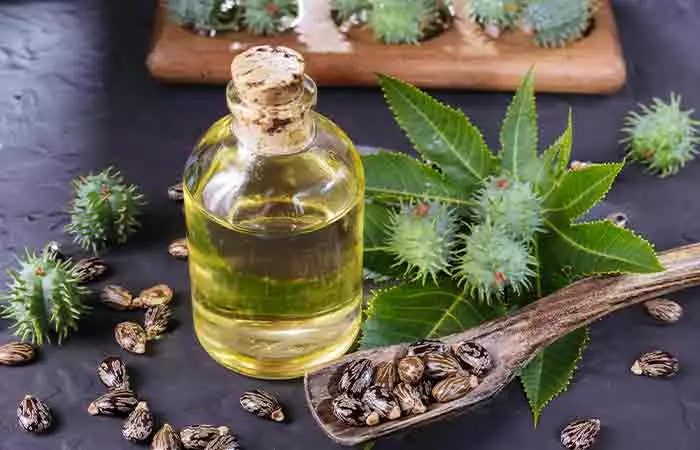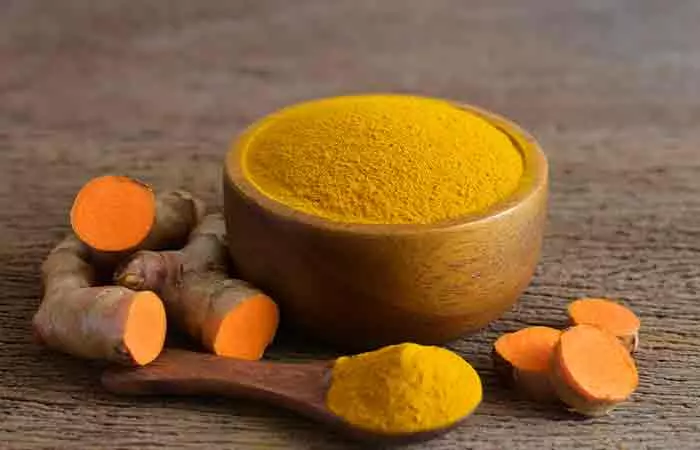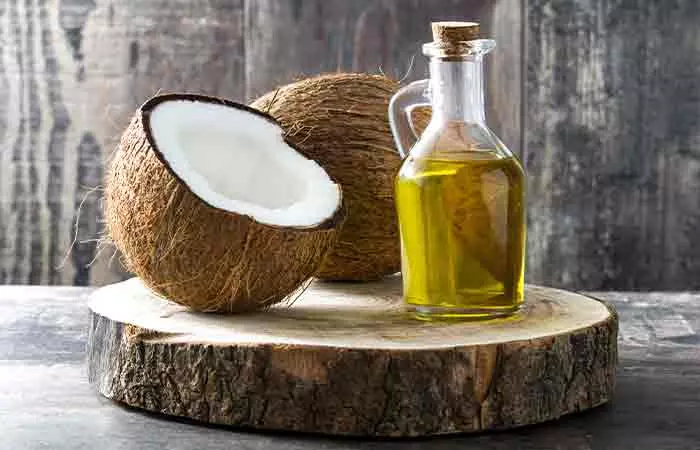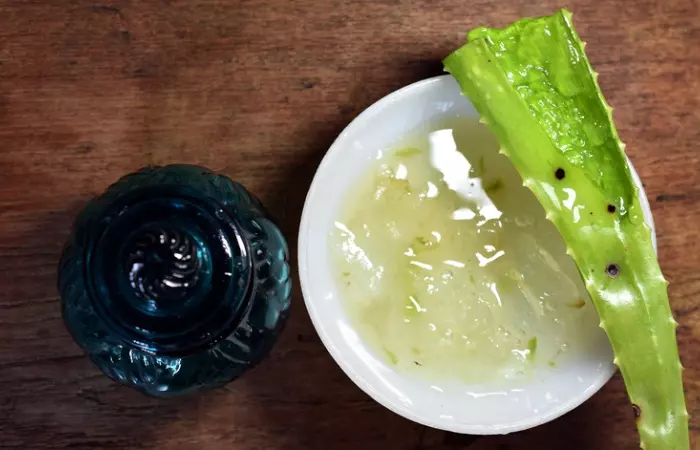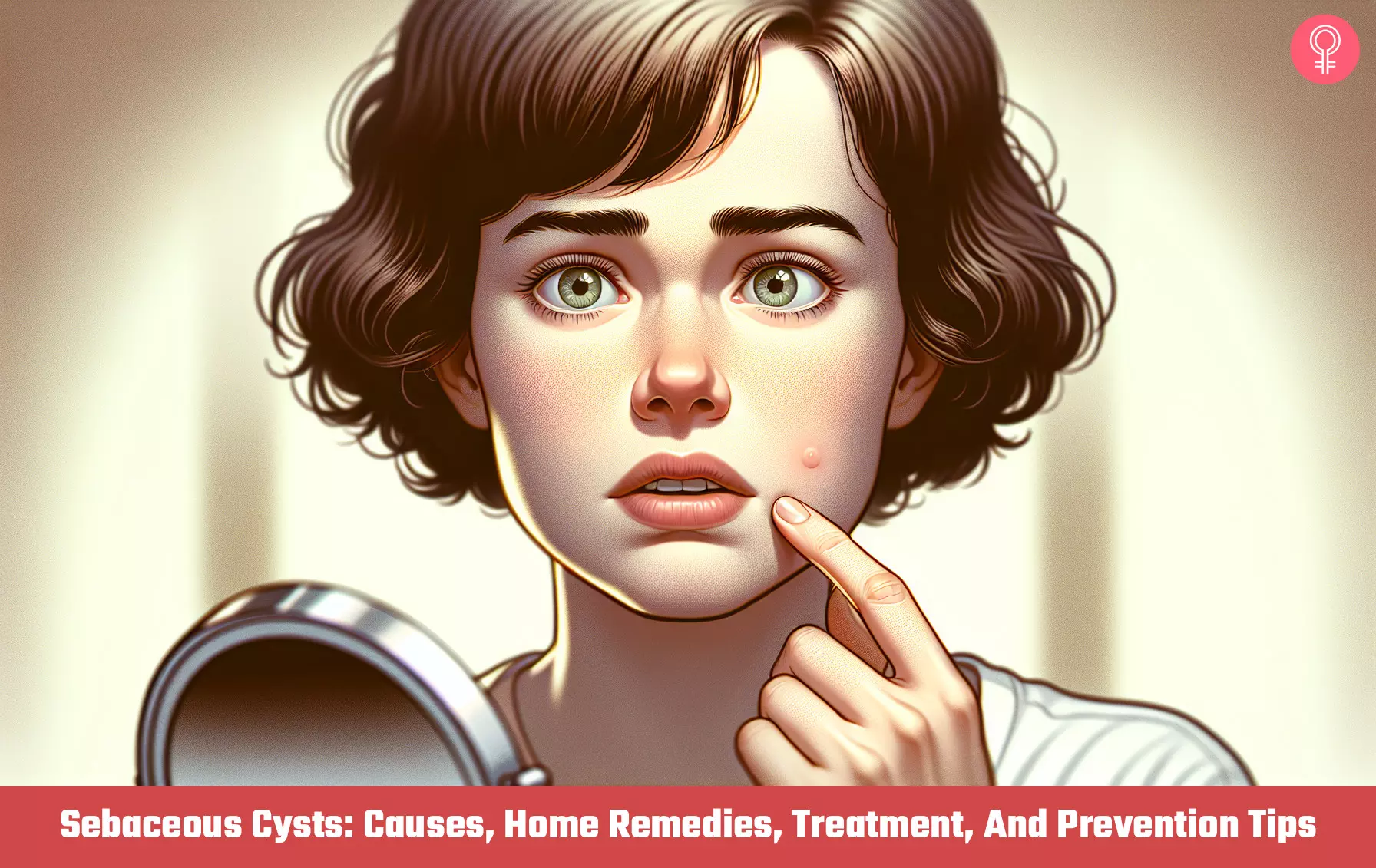What Are Sebaceous Cysts?
A sebaceous cyst is a small, non-cancerous bump beneath your skin that contains pus. These cysts may look intimidating but are not a cause for serious concern or long-term damage. However, they may cause some discomfort and inconvenience. Sebaceous cysts are abnormal bumps on your body that may contain a yellowish, foul-smelling liquid. These bumps may be painful and may cause inflammation on your skin. Sebaceous cysts can occur in both men and women. However, men are more susceptible to these cysts as they have relatively more body hair than women. They can develop in adolescents as well as adults.
What Causes Sebaceous Cysts?
Sebaceous cysts are formed due to a blockage in or damage to the sebaceous gland. The cyst usually occurs due to trauma to the area around your neck, back, groin, or on your face. The injury may have been a scratch, wound, or acne. Sebaceous cysts can also be the result of a follicle that has ruptured, a misshapen or damaged sebaceous gland, or injury to a previous cyst. Sebaceous cysts grow gradually and sometimes become inflamed or rupture. If this happens, it may pose a risk for infection. In some cases, these cysts may recur. This can happen due to trauma or injury to the affected area. This trauma can happen in the form of a scratch, skin conditions like acne, or a surgical wound. Sebaceous cysts may also develop as a side effect of chemotherapy. Andi, a blogger, said, “As if chemo wasn’t awful enough, just a couple of weeks before my final treatment, a bean-sized bump developed in my groin. When you’re prone to cancer, everything is a potential freakout. The bump played hide and seek there for a year and nine months before my breast surgeon (!!) was kind enough to surgically remove it and pronounce it a sebaceous cyst (i).” Sebaceous cysts appear out of the blue and go away on their own without treatment in most cases. However, if the cyst is causing you a lot of discomfort and pain, you should treat it immediately. Here are some natural ways that can help minimize their appearance and reduce discomfort.
Home Remedies For Sebaceous Cysts
1. Warm Compress
Using hot packs or compress a few times a day can help soothe inflammation around the sebaceous cyst (1). The heat from the washcloth may enable the cyst to drain the pus, thus relieving pain. You Will Need
A sterile washcloth A bucket of warm water
What You Have To Do How Often You Should Do This Repeat until the pain subsides.
2. Castor Oil
Ricin oleic acid, the main constituent of castor oil, has anti-inflammatory properties (2). This may help mitigate the inflammation associated with a sebaceous cyst. You Will Need
2-3 drops of castor oil Sterile cotton cloth 2-3 cups of warm water
What You Have To Do How Often You Should Do This Repeat two times daily. Note: Castor oil may cause irritation in certain skin types. Hence, do a patch test before you use it on the affected area.
3. Tea Tree Oil
Tea tree oil possesses antimicrobial and anti-inflammatory properties (3). These properties may not only help in inflammation reduction but also prevent further infection in the affected area.
2-3 drops of tea tree oil 1 teaspoon of any carrier oil (sweet almond or jojoba oil)
What You Have To Do How Often You Should Do This Repeat two to three times daily, especially if you have a large cyst. Note: Do not apply tea tree oil topically if you are allergic to it, as it may cause a burning sensation on your skin.
4. Apple Cider Vinegar
Apple cider vinegar possesses antimicrobial properties (4). This may help in reducing and preventing infection around the sebaceous cyst. You Will Need
1 cup of water 1-2 tablespoons of apple cider vinegar Cotton ball
What You Have To Do How Often You Should Do This Repeat two times daily.
5. Turmeric
Turmeric contains curcumin that has anti-inflammatory and antimicrobial properties (5). Hence, it can help reduce inflammation and infection in the sebaceous cyst.
1 teaspoon turmeric powder A few drops of water
Do this two times daily.
6. Garlic
Garlic exhibits antimicrobial properties against many bacteria and fungi (6). Its broad-spectrum therapeutic effect on infections can mitigate the infection around the sebaceous cyst. You Will Need
4-5 cloves of garlic 100 mL of olive oil
What You Have To Do How Often You Should Do This Repeat this process three to four times daily. Note: Garlic may cause irritation and skin damage if left on for too long.
7. Coconut Oil
Coconut oil possesses both anti-inflammatory and analgesic properties (7). This can reduce the pain and inflammation in and around the affected area. Lauric acidi A natural white solid fatty acid found in plant and animal fats and oils, like coconut and palm oil. is the main component of coconut oil that exhibits antimicrobial properties (8). This may help alleviate the infection that causes a sebaceous cyst. You Will Need A teaspoon of virgin coconut oil What You Have To Do How Often You Should Do This Repeat two times daily.
8. Epsom Salt
Epsom salt is commonly known as magnesium sulfate. The presence of magnesium in the salt may help reduce inflammation (9).
Warm water 1-2 cups of Epsom salt
What You Have To Do How Often You Should Do This Repeat two times daily for best results. Note: Epsom salt can cause an allergic reaction in some people. You must seek immediate medical attention if you experience skin irritation, shortness of breath, or swelling of the lips.
9. Aloe Vera
Aloe vera possesses anti-inflammatory and antiseptic properties (10). Both these properties may help in reducing the swelling around the sebaceous cyst and prevent further infection. ½ teaspoon of aloe vera gel What You Have To Do How Often You Should Do This Repeat two times a day.
10. Witch Hazel
Witch hazel or Hamamelis bark contains tanninsi Water-soluble natural compounds found in different parts of plants and plant foods, like chocolate, coffee, tea, and wine. , which possess anti-inflammatory properties (11). Hence, it can be used to reduce inflammation around the sebaceous cyst.
Witch hazel extract Sterile cotton ball or Q-tip
What You Have To Do How Often You Should Do This Apply this with a sterile cotton ball three to four times daily. Note: Witch hazel extracts may cause skin irritation in some people. Hence, do a patch test before trying this herbal remedy.
11. Grapefruit Seed Extract
Grapefruit seed extract exhibits antibacterial activity (12). This may help combat the bacteria triggering the infection in the sebaceous cyst.
A few drops of grapefruit seed extract Bandage
What You Have To Do How Often Should You Do This You may repeat this two times daily.
12. Frankincense Oil
Frankincense was used as part of Chinese medicine for its anti-inflammatory and analgesic properties (13), (14). This may help alleviate swelling and pain associated with a sebaceous cyst. You Will Need
3-4 drops of frankincense oil A teaspoon of olive oil
What You Have To Do How Often Should You Do This Repeat three times daily. Note: If you are allergic to frankincense oil, avoid this remedy as you may develop rashes on your skin.
13. Potato
Potatoes are rich in phenolicsi Crystalline solid and aromatic compounds found in plants and in high amounts in the diet through vegetables and fruits. , fiber, proteasei Enzymes that facilitate the breaking down of proteins into single amino acids the (building blocks of proteins). inhibitors, and glycoalkaloidsi Bitter natural chemical compounds containing nitrogen in plants like potatoes, tomatoes, and peppers. that exhibit anti-inflammatory and antimicrobial properties (15). These properties may help reduce the infection and swelling that accompanies the sebaceous cyst. You Will Need
A medium-sized raw potato Washcloth
What You Have To Do How Often Should You Do This Repeat every night before going to bed.
14. Honey
Owing to its anti-inflammatory and wound healing properties (16), honey may help in reducing the infection that causes sebaceous cysts and boost the natural healing process. You Will Need
1 tablespoon honey Gauze
What You Have To Do Using one end of the gauze, apply honey to the affected area. How Often Should You Do This You can repeat this several times during the day with a fresh gauze. Although these home remedies may help manage sebaceous cysts, it is crucial to watch for signs of infection, like increased redness, swelling, or pain. If these symptoms develop, seek advice from a healthcare professional. Check out below how they are treated by professionals.
Sebaceous Cyst Treatment
Usually, a sebaceous cyst can be left unattended if it does not cause much discomfort. But if you decide to seek medical help, given below are the options available for the removal of sebaceous cysts:
1. Incision Of Cyst And Drainage
Your doctor will make an incision in the cyst that will enable the draining out of the fluid (17). However, the cyst often reappears after this procedure.
2. Minor surgery
This process, also known as excision, involves the removal of the entire cyst (18). This surgery is safe and ensures that the cyst does not reappear. If the cyst appears inflamed, the operation will be delayed.
How Can I Prevent Sebaceous Cysts?
Sebaceous cysts are caused by a blockage in the skin that ends up in sebum getting clogged in open pores. Therefore, you must always remember to keep your skin clean and make sure that sebum production is regulated. Other cysts, such as chalazion that can form in your eyelids, can be prevented by cleaning the eyelids and eyes regularly with fresh water. You must also avoid causing any further injury to the region where the cyst occurred, as trauma or injury may cause recurrence. Avoid picking at or rubbing the cyst.
Where Do Sebaceous Cysts Occur Mostly?
Sebaceous cysts can be small or large. Large cysts can be painful or cause discomfort, while smaller cysts are not painful. These cysts are usually observed on the face, neck, upper back, around the groin, and the upper chest. According to a study conducted on 432 cases of sebaceous cysts, 65% of cases were found on the face, 10.9% on the trunk, 7.9% on the scalp, 7.9% on the neck, 4.3% on the lower extremities, 3.9% on the upper extremities, and 0.2% on genitalia. Cysts are usually filled with a yellowish pus-like substance and are usually soft to the touch.
How Can I Tell If I Have A Sebaceous Cyst?
The simplest way to tell if you have a sebaceous cyst is the appearance of a small lump under the skin. The lump may or may not be painful. The area around the cyst may appear red. The cyst is characterized by the presence of yellowish, pus-like fluid with a foul smell.
How Are Sebaceous Cysts Diagnosed?
Sebaceous cysts can be confused with acne breakouts, lipomasi Fatty round lump of tissue, usually harmless, slowly growing beneath the skin and underlying muscle layer. , or tumors. Hence, it is always recommended to get it diagnosed by a doctor. The diagnosis typically starts with the doctor taking a look at the cyst. Depending on the size of the cyst, your doctor may also scrape off skin cells to conduct a biopsy. They may recommend draining the cyst to remove the pus. After a physical examination, your doctor might recommend getting an ultrasound or CT scan to check the severity of the cyst. While a boil and cyst may seem similar, there are key differences between the two. Scroll down to the next section to find out.
Sebaceous Cyst Vs. Boil
Sebaceous cysts are typically not painful unless infected, whereas boils are painful. Both sebaceous cysts and boils can appear anywhere on the body. But they are more common on armpits as they are more likely to sweat or experience friction (19). While sebaceous cysts appear as small lumps under the skin, boils often have a visible center that you can drain when they mature. Sebaceous cysts occur due to trauma to the skin, such as a surgical wound, while boils mainly occur due to the Staphylococcus aureus bacteria (19).
Both these skin issues may resolve on their own with simple remedies like a warm compress. However, if they are infected or cause severe discomfort, consult a doctor immediately. When should I visit a doctor? Sometimes, it is possible that even after following a few home remedies, you do not find relief from the symptoms. In such cases and cases wherein your symptoms worsen, seek professional medical help at the earliest to deal with sebaceous cysts. What to do when an infected sebaceous cyst bursts? If a sebaceous cyst bursts, it can lead to the infection of the cyst. This requires immediate medical attention from your doctor, especially if the wound is deep. How long will it be before an infected sebaceous cyst is healed? In most cases, a sebaceous cyst can heal on its own. But if it gets infected, medical intervention is the need of the hour to contain the infection. If it seems mild, you may try out any of the remedies mentioned above and treat the cyst at home. How much does the sebaceous cyst removal cost? The procedure of sebaceous cyst removal can range between about $500-$1200, depending on the number of cysts, the area, the duration of surgery, type of anesthesia required, physician, and geographical location. Can you squeeze out a sebaceous cyst? No, do not squeeze out a sebaceous cyst because it raises your risk of infection, inflammation, and discomfort. What antibiotics treat sebaceous cysts? A study found that while antibiotics like cephalexin and cloxacillin are frequently used to treat sebaceous cysts, they may not be very effective (20).
Illustration: Sebaceous Cysts: Causes Home Remedies Treatment And Prevention Tips
Discover simple and natural remedies for sebaceous cysts. Explore effective ways to reduce inflammation and bid farewell to these cysts swiftly in the video below.
